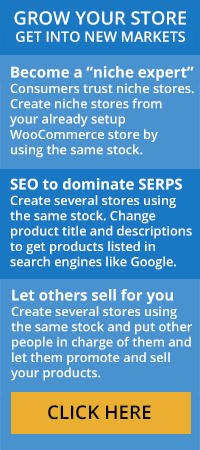Myths about the advantages of moving from WooCommerce to Shopify:
- Shopify is hosted and managed as a SaaS tool; that means you don’t have to worry about the technology and you can focus on your business only.
WooCommerce uses the latest technology. - Performance – Stop losing sales to slow-loading pages. Experience great site speed, no matter whether you have 2 visitors or 1 million visitors. You can have huge cost savings if your site is a high-traffic site as Shopify does not charge anything extra for that.
WooCommerce can be lightning fast too. - Ease of Use – WooCommerce has a steeper learning curve. Shopify takes care of your domain name, hosting, security (SSL) certificates, etc. You don’t have to upgrade, install, manage, or update any software. Shopify has an easy-to-manage Admin portal where you can upload products, manage categories, edit pages, change settings, and can do pretty much everything without needing the help of a developer or a support person.
WooCommerce is not difficult, and there are thousands of learning videos on Youtube. It’s not a problem for a novice to use WooCommerce. - Ease of Building and Maintaining – You can build an e-commerce store on Shopify quicker than WooCommerce. Shopify store is easier to manage, change, edit and maintain.
WooCommerce is a modern e-commerce tool that its easy to use, Shopify its not easier. - Security – With Shopify, security is taken care for you. Shopify comes with built-in SSL and is a PCI-DSS-compliant tool. You can start processing credit and debit card payments from day one. PCI-DSS compliant is not built-in WooCommerce.
WooCommerce is a WordPress product, WordPress is the most common software to create web sites on, security is strict. - Customer Support – Shopify provides 24/7 support over the phone, live chat, and email. This is in addition to a library of helpful guides, a community forum, and a setup wizard.
There is no other e-commerce software than WooCommerce that has so many guides and tutorials on the net. - Shopify has built-in analytics that has the most important data at your fingertips.
WooCommerce has built-in analytics too. - Same-store for online and offline customers – Shopify gives you a single place to manage your business for both online and offline sales through the online site and POS tools. You can set up multiple physical stores, multiple warehouses and track inventory across all these locations.
WooCommerce can be used as the same store for online and offline, you can even connect many online stores with WooMultistore. - Shopify’s mobile app lets you manage the most important parts of your business like product updates, order fulfillment, etc.
WooCommerce also has an app for that. - Shopify has multiple payment options like Google Play, Apple Pay, and other usual payment gateways along with its own payment gateway option.
Same with WooCommerce. - Abandoned Cart – With Shopify, it is incredibly easy to set up an abandoned cart email. It’s part of the system.
You can get free plugins that do that for you in WooCommerce. - Shipping – With Shopify Shipping, you’ll be able to print all of the documents you need to include with international shipments and you can access negotiated rates with major carriers like DHL, UPS, and USPS directly from within Shopify.
You can get free plugins that do that for you in WooCommerce. - Shopify plugins (called app) are on the cloud and upgraded and fixed by vendors. You never have to worry about any plugin changes or upgrades on Shopify.
Premium plugins for WooCommerce hold a high standard, they are updated when needed. - Verified Themes and apps: All Shopify listed themes are reviewed and verified by Shopify so you get best performance and UI/UX experience.
There are numerous premium themes for WooCommerce and they are regularly updated, Divi is one example. Also, great sites like Pee Aye give good tips for themes like DIVI. - Multichannel Selling – Shopify provides you the ability to sell on Amazon, eBay, Instagram, Etsy, Facebook and other channels.
WooCommerce has plugins that allow you to do that too. - Marketing Tools – Shopify has an in-built marketing tool.
WooCommerce doesn’t have that, but there is a question about how good the Shopify marketing tools actually are. - Pricing – Shopify’s prices start from $29/month and comes with free high-speed unlimited hosting, security, SSL, backend maintenance, etc.
The $29/monthly Shopify deal is not good enough for most users. WooCommerce starts on $0, but expect a monthly cost of at least $60 for extra plugins.
That was 17 myths, there are also some obvious disadvantages of moving to Shopify:
- You will lose control on backend code and customization.
- Shopify is mainly an e-commerce stores. If you have a bigger website with e-commerce as an additional feature then Shopify may not be suitable for you.



